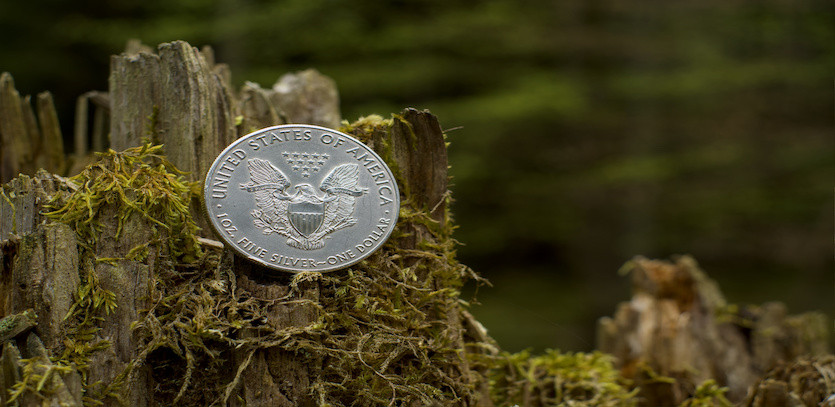A Deep Dive into Timberland Investments
Investing in timberland, also known as lumber, is often considered an effective strategy to diversify an investment portfolio and hedge against inflation. The premise is simple—investing in land that yields timber. From pension funds and charitable trusts to universities and individual investors, millions of acres of timberland in the U.S. are owned by a wide array of entities.
Timberland investment gives investors a unique opportunity to tap into an alternative investment source. This involves channeling funds into trees, be it in managed tree plantations or natural forests, with a vision for the future. Investors rely on the steady and predictable growth of the trees, which are expected to appreciate over time and can be sold for their wood at a later date.
A key factor that makes timberland an attractive investment option is the consistent growth of trees. The volume of trees generally increases by about 5% each year, a figure that varies depending on the tree species, climate, age, and other variables. This physical growth offers a unique and relatively stable investment opportunity, largely insulated from the instability and unpredictability of the global economic climate.
The Advantages of Timberland Investments
Timberland investments bring a host of benefits, thanks to the ever-growing demand for wood and lumber products over the long term. This demand is not directly influenced by market forces that typically impact other investment instruments such as stocks and bonds, contributing to the steady growth that makes timberland a popular choice for portfolio diversification and inflation hedging.
There are multiple ways for investors to gain exposure to timberland. They can invest in timber ETFs (exchange-traded funds), which comprise numerous companies that own forests and produce timber-related products. Another route is through REITs (real estate investment trusts), which include forested land owners that also produce timber-related goods.
Large institutional investors like public and private pension funds often use timberland investment instruments. The primary underlying assets for these investments are tree farms and managed natural forests. Timber Investment Management Organizations (TIMOs) play a crucial role here. These financial management groups assist institutional investors in managing their timberland investment portfolios, acting as intermediaries to locate, analyze, and acquire investment properties that are best suited to their clients' needs.
How Timberland Ownership Functions
Timberland investment is appealing to a wide range of investors, including large institutional entities such as pension funds and university endowments. The central assets for these investments are managed tree plantations and tree farms. In fact, it's estimated that TIMOs manage over 23 million acres of forest plantations, representing approximately 7% of all privately-owned forest farms and managed tree plantations in the U.S.
Investing in timberland presents an excellent opportunity for diversifying a portfolio of stocks and fixed-income investments. It can also serve as an effective hedge against inflation. Both timber and land components tend to appreciate over time, and they are not bound by the dynamics of traditional financial markets.
Investors can also derive periodic cash returns from the sale of timber. Plus, they can lease out a portion of the undeveloped land, generating lease income from other investors. They can also tap into the land's value by introducing outdoor activities like camping, fishing, and hiking, creating an additional stream of income.
Key Characteristics of Timberland Ownership
- Long-term investment, hedged against inflation, and uncorrelated to other investments
- Management is crucial but not overly complex, resulting in low management risk
- Risks from natural disasters (wind, fire, pests, and disease) are relatively low with a diversified timberland investment
- Cyclical in nature, similar to many commodities
- Tax benefits
- Harvest timings can be manipulated for tax efficiency and capital gains rates apply to it
- Investments can self-fund or generate cash flow
- Lower liquidity, as the process of selling the asset can take 12 months or more
- It's an investment that can be physically appreciated and enjoyed

Realizing Profit from Timberland Investment
With time, trees grow and mature, leading to a class upgrade of the timber products they can produce. For instance, trees used for paper manufacturing typically take over ten years to mature before they can be harvested for paper products.
There are several channels through which investors can earn a positive return on their timber investment.
Simplicity of Investment
The process of becoming a timberland investor is straightforward. The first approach is to directly acquire forest land from the owner. This method requires substantial capital since the investor is purchasing both the land and the trees planted on it. Financing for the acquisition can be obtained through a mortgage from a financial institution.
Alternatively, investors can acquire shares of real estate investment trusts (REITs) that specialize in timber. REITs are entities that invest in the real estate sector, allowing investors to buy shares in public exchanges and become part-owners of a company. The capital input can range from a few hundred to millions of dollars, depending on what the investor can afford. The income generated by the REIT from selling trees and forest land is then distributed to the investors in the form of dividends.
Biological Growth
As trees mature, they gain in weight and density, referred to as biological growth. This added volume increases the value of the trees on a per-ton basis as they can be utilized for more extensive and unique projects or produce more standard lumber per tree.
Land Appreciation
Land appreciation refers to the increase in the value of land over time. Although the rate of appreciation tends to be slow, there are several strategies that landowners can adopt to enhance its value.
Maintaining a well-kept forest with a robust road network in a densely populated area can significantly increase the value of the land. The forest land can be leased for recreational activities such as camping, hiking, hunting, etc. When the trees have matured, they can be harvested, and the land can be repurposed for other uses such as an industrial park, golf course, or shopping mall.
Price Appreciation
Unlike the volatile nature of stocks, which require investors to closely monitor market trends, timber offers a more stable investment option. As a limited physical product, timber has consistently appreciated in price over the years. This appreciation is directly linked to the increasing demand for timber, a critical material in the construction industry.
The expansion of the housing market is beneficial for timberland investors who bank on the biological growth of their tree plantations to meet this demand and earn a return on their investment.
The Risks Associated with Timberland Investment
Despite its many benefits, timberland investment is not without risks, such as:
- A recession could lead to a decline in demand for lumber, subsequently lowering prices.
- Natural disasters can devastate forestland, eroding the value of an investment.
- Downturns in the housing market can harm demand for timber, resulting in lower prices.
Real-World Instances of Timberland Investments
Several vehicles exist for investing in timberland beyond direct land ownership. Some examples include:
The Guggenheim Timber (CUT) is an ETF that comprises over two dozen companies that manufacture timber products or own forestland. The typical annual dividend yield for this global timber fund is over 3%.
The iShares S&P Global Timber & Forestry Index ETF (WOOD) tracks the S&P Global Timber & Forestry Index and generally yields an annual dividend of over 2.5%.
Weyerhaeuser Company (WY) is a timber REIT that owns or controls more than 12 million acres of forestland in the United States.
Conclusion
As an alternative investment, timberland offers several potential benefits. However, it's essential to fully understand the various risks and opportunities that this unique asset class presents before making an investment. It's also crucial to consider working with an investment adviser or a Timber Investment Management Organization (TIMO) to get the most from a timberland investment.
The unique growth mechanism of trees allows the investment to naturally appreciate, regardless of economic trends. Also, through the dual assets of land and timber, investors can expect to gain from both the biological growth of trees and land appreciation. Additionally, the variety of potential income sources, including timber sales and leasing the land for recreational activities, add to the appeal of timberland investment.
However, like all investments, timberland isn't without its pitfalls. The impact of natural disasters, market downturns, and recession are just a few examples of factors that could potentially affect your investment. These risks underline the importance of thorough research and planning in this venture.
For investors who are interested in timberland but are not ready to purchase the land directly, ETFs and REITs provide viable alternatives. These instruments allow you to invest in timberland without the need for high capital outlays or land management responsibilities.
Timberland investment is a unique and potentially rewarding venture that requires careful consideration. For anyone considering diversifying their portfolio and doesn't mind a long-term investment, it can be a fascinating area to explore.





